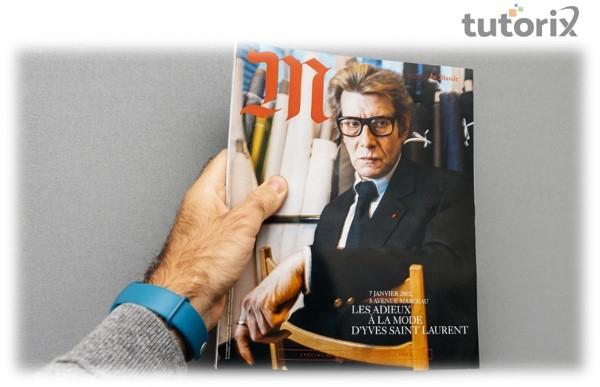

Some stories blend the two most opposite styles. The milestones achieved that were recognised by the public and some inner, untold sufferings. Yves Saint Laurent is one such story that maintained the legacy of the design era, with public success and also some unrevealed sufferings.
Yves Saint Laurent is a French fashion designer who was born on August 1st, 1936, in Algeria. From his pre−teens, he was a studious young boy who was more inclined towards the arts. In his early teen years, he designed dresses for his mother and sisters. His designs gained more notice with time, and he was titled as the world’s youngest couturier at the age of 21.

The editor of French Vogue, Michel De Brunhoff, introduced him to Christian Dior, then a giant in the fashion industry. Dior had a great influence on Saint Laurent’s career. Under Dior’s influence and teachings, his style matured and he made a remarkable journey as one of the greatest leading fashion designers.
Yves Saint Laurent is considered one of the most influential and celebrated designers of the day. He was a charismatic personality with a creative vision and sharp aesthetics. At the age of 17, he submitted some sketches to a contest for young fashion designers and won first place. And at the award ceremony, he met Michel De Brunhoff. Meeting him proved to be a turning point in his career, as Brunhoff recognised similarities between Dior’s and Laurent’s sketches and sent them to Christian Dior. Saint Laurent spent his first year at the House of Dior, designing some accessories and decorating the studios. But soon after Dior’s death in 1957, Saint Laurent was made the Head Designer of the House of Dior. Some of his collections even saved the House of Dior from a severe financial crisis. Laurent was also made to join the army during the Algerian War, which resulted in his being fired from the House of Dior. At the hospital, he himself noted the genesis of his mental health problems and drug addictions.

After recovering, he, along with industrialist Pierre Berge, started their own fashion house, Yves Saint Laurent YSL. His main goal was to design a range of wardrobes that were elegant and modern yet comfortable and affordable for people to choose from, and some of his works made him an overnight success. In 1967, he started shifting his focus from haute couture to a ready−to−wear range by opening his YSL Rive Gauche Boutique. For a very long time, the ready−to−wear range remained popular with the public and the press. Later, he was often seen at clubs and got more driven towards frequent drinking and the use of cocaine. He also suffered from many mental health problems due to this, and on June 1st, 2008, Laurent died due to brain cancer, a couple of weeks after he was diagnosed as terminal. The doctors and Laurent's business partner decided to not disclose the disease to him as he would not be able to accept it.
In 1958, the Trapeze dress was designed by Laurent. It had a flowing silhouette and a freed waist, and felt elegant.
In 1969, Laurent introduced the safari jacket to the fashion industry. His dress included large patch pockets and was oversized.
The Mondrian dress was designed by Laurent in 1965, which was inspired by the Dutch painter Piet Mondrian. The dress represented art and culture in the fashion industry.
In 1966, Laurent developed "Le Smoking Suit," which gained so much popularity in its time. The suit was mainly made to protect it from the smell of cigarettes.
In 1963, the Beatnik style was inspired by a counter−culture mindset. The dress was made of leather and could be worn with thigh−high boots.
Laurent was not limited to the fashion industry; his interests were also in different industries. The following are some of his most popular songs −
Laurent appeared on television on the American television show "What’s My Line?" as a "mystery guest."
‘Saint Laurent’, a movie themed on Laurent in 2014.
Some books have been written on him as well. They include "Yves Saint Laurent: A Moroccan Passion" by Lawrence Mynott; "Dior" by YSL; and "Yves Saint Laurent: The Impossible Collection".
Though Yves Saint Laurent’s death was a tough realisation and had a dark side, Laurent’s contribution towards fashion remains incredible as he defined his own code of style. From his very first work at the House of Dior, creating designs of empowerment and creating a modern women’s wardrobe that was chic, elegant yet comfortable, was Laurent’s style. Valerie Steele, Director and Chief Curator of the museum at the Fashion Institute of Technology, named Laurent as the "Picasso" of fashion since each of his designs were different from the other but had an incredible impact on fashion. His designs continue to carry that remarkable impact on this modern world. According to Yves Saint Laurent, "Fashion comes and goes, but style remains forever."